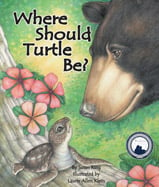Alignment to Standards for WA

| Grade | Number | Standard |
|---|---|---|
| 2,3 | 2-3 LS2A | Ecosystems support all life on the planet, including human life, by providing food, fresh water, and breathable air. |
| 2,3 | 2-3 LS2B | All ecosystems change over time as a result of natural causes (e.g., storms, floods, volcanic eruptions, fire). Some of these changes are beneficial for the plants and animals, some are harmful, and some have no effect. |
| 2,3 | 2-3 LS2D | Humans impact ecosystems in both positive and negative ways. Humans can help improve the health of ecosystems so that they provide habitats for plants and animals and resources for humans over the long term. |
| 2,3 | 2-3 LS3A | There are variations among the same kinds of plants and animals. |
| 4,5 | 4-5 LS1A | Plants and animals can be sorted according to their structures and behaviors. |
| 4,5 | 4-5 LS1B | Plants and animals have different structures and behaviors that serve different functions. |
| 4,5 | 4-5 LS1C | Certain structures and behaviors enable plants and animals to respond to changes in their environment. |
| 4,5 | 4-5 LS1D | Plants and animals have structures and behaviors that respond to internal needs. |
| 4,5 | 4-5 LS2A | An ecosystem includes all of the populations of living organisms and nonliving physical factors in a given area. Living organisms depend on one another and the nonliving physical factors in their ecosystem to help them survive. |
| 4,5 | 4-5 LS2F | People affect ecosystems both positively and negatively. |
| 4,5 | 4-5 LS3B | Plants and animals inherit many characteristics from their parents. Some inherited characteristics allow organisms to better survive and reproduce in a given ecosystem. |
| 4,5 | 4-5 LS3C | Some characteristics and behaviors result from an individual plantês or animalês interactions with the environment and are not passed from one generation to the next by heredity. |
| K,1 | K-1 LS1B | All plants and animals have various external parts. |
| K,1 | K-1 LS1D | Different animals use their body parts in different ways to see, hear, grasp objects, and move from place to place. |
| K,1 | K-1 LS1E | Animals have various ways of obtaining food and water. Nearly all animals drink water or eat foods that contain water. |
| K,1 | K-1 LS2A | There are different kinds of natural areas, or habitats, where many different plants and animals live together. |
| K,1 | K-1 LS2B | A habitat supports the growth of many different plants and animals by meeting their basic needs of food, water, and shelter. |
| K,1 | K-1 LS2C | Humans can change natural habitats in ways that can be helpful or harmful for the plants and animals that live there. |
| K,1 | K-1 LS3B | There are many different types of living things on Earth. Many of them are classified as plants or animals. |
| K,1 | K-1 LS3C.1 | Describe several external features and behaviors of animals that can be used to classify them (e.g., size, color, shape of body parts). |
| K,1 | K-1 LS3C.3 | how pairs (males/females) of plants and/or animals are similar to and different from each other (e.g., cats and dogs both have four legs, but many dogs have longer snouts than cats). |